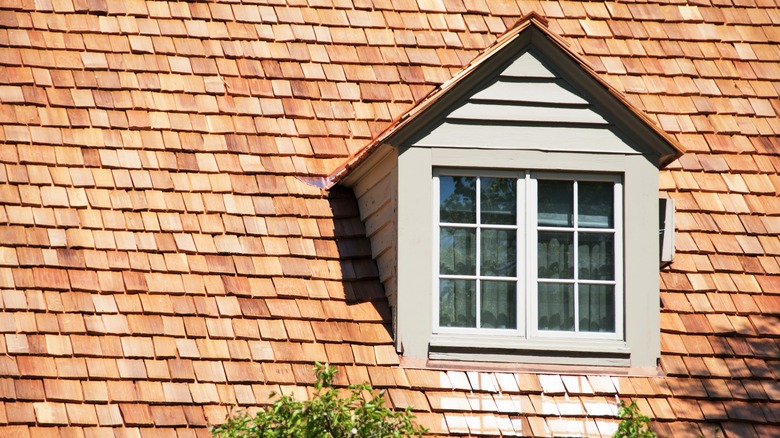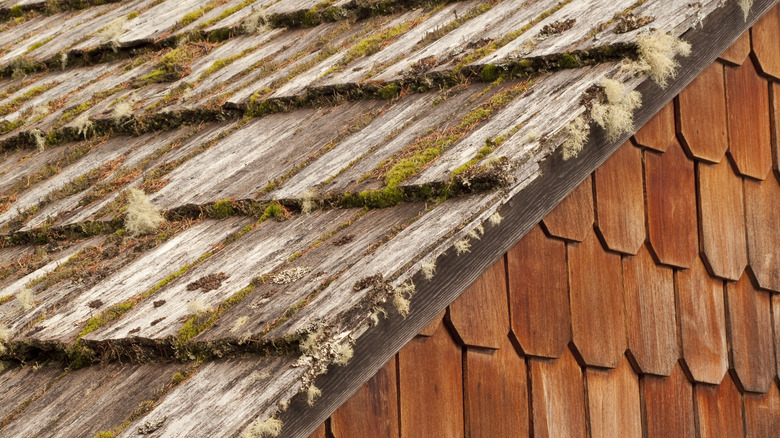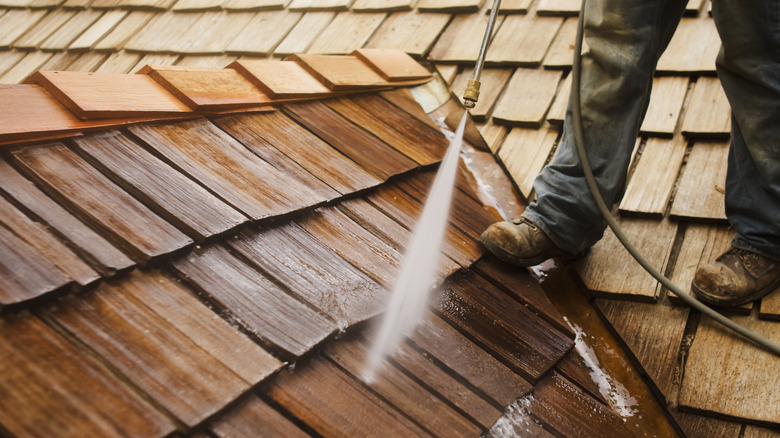What To Know About Wood Shingles Before Installing Them On Your Home
When deciding which material to choose for the roof of your home, there's a lot to consider. Different materials offer distinct textures, styles, and even functions. One popular and traditional choice is wood shingles. Even within this choice, there are seemingly endless options when you consider the type of wood — cedar, redwood, or pine, for example — and whether or not to paint or stain it. In this way, opting for wood shingles offers a great variety for a wide range of aesthetics that you can adapt to complement your personal taste and the architectural style of your home.
Beyond aesthetics, wood shingles offer advantages for the interior of your home as well. They are renowned for their ability to insulate your house, helping to regulate the temperature inside. During the summer, they can help keep you cool, and throughout the winter, they can prevent heat loss, which helps to reduce the amount of energy required to heat your home.
Another advantage that choosing wood shingles offers is their durability. A well-maintained wood-shingle roof can last decades, depending on which type of wood you opt for. Additionally, wood shingles are resistant to inclement weather, like wind, hail, rain, and snow. If you have your wood-shingle roof inspected and repaired as needed, it could literally last your lifetime, saving you costly renovations or overhauls of an entire new roof. Thus, it's definitely worth considering the upfront investment for a reliable roof in the long run.
Potential downsides of wood shingles
While there are many advantages to choosing wood shingles for your roofing material, there are some downsides that you ought to know before committing to this option. One major drawback is that wood is susceptible to rot and decay. Though wood can insulate your home well, if you live in a particularly wet climate, it may be best to select a more resilient material that can withstand constant moisture in order to avoid rot, mold, and mildew. Over time, consistent wetness may compromise the integrity of your roof and require more frequent maintenance or repairs.
Similarly, wood shingles are susceptible to pest infestations. Termites, carpenter ants, and other wood-boring insects like to make shelter in this material, ultimately causing damage and necessitating repairs. If your climate is well known for these types of infestations, it may be better to consider a synthetic material that is more pest resistant.
Another climate-related issue that may impact your choice is flammability. Wood is a highly combustible material and is susceptible to easily catching fire. If you live in an area that is prone to wildfires, you should consider alternative roofing options that are more fire resistant for the safety of your home. Moreover, wood shingles do require more maintenance than synthetic options, including cleaning, sealing, and treating. The costs and time required for these tasks can be cumbersome.
How to care for wood shingles
If you ultimately choose to roof your home with wood shingles, it's a good idea to have some basic upkeep tasks in mind to prolong the life and performance of your new roof. First and foremost, wood-shingle roofs require regular cleaning. Over time, dirt, debris, and algae can accumulate on the surface of the shingles, which can lead to discoloration and deterioration. If you're brave enough to clean them yourself, the USDA Forest Service recommends using a mixture of bleach and water to kill any microorganisms living on the surface. Alternatively, you can hire a professional company to clean them for you, and in some cases, this may be better, as climbing up to your roof can be quite dangerous, particularly if your home is more than one story tall.
Another maintenance task that you'll want to stay on top of is roof inspections. Having your roof inspected regularly is important to identify any signs of damage or wear. By tackling the smaller repairs, like cracks, splits, or loose pieces, you can extend the life of your roof and prevent other damage to your home, such as water damage from roof leaks. Finally, it's important to have your roof sealed or treated, especially if you live in a particularly wet climate. Abundant moisture can penetrate wood shingles, so protecting them with a sealant will help them last longer and protect the inside of your home.


